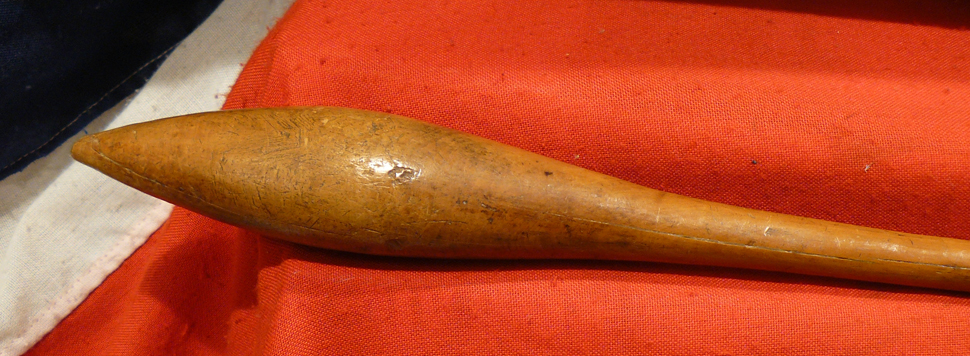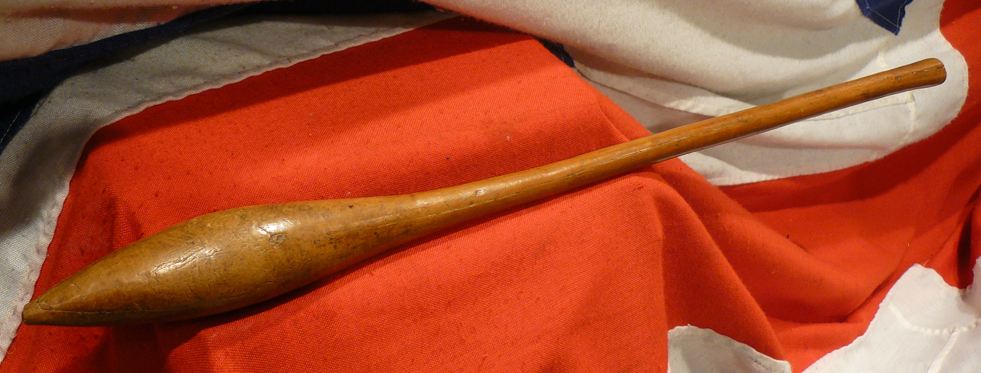An Antique Zulu Throwing Club, A Scarce Version Of The Zulu Knopkerrie
Ovoid pointed head Knobkierrie, also spelled knobkerrie, knopkierie or knobkerry, are African clubs used mainly in Southern and Eastern Africa. Typically they have a large knob at one end and can be used for throwing at animals in hunting or for clubbing an enemy's head. This knobkierrie is carved from a branch thick enough for the knob, the rest being whittled down to create the shaft.
The name derives from the Afrikaans word knop, meaning knot or ball and the word kierie, meaning cane or walking stick. The name has been extended to similar weapons used by the natives of Australia, the Pacific islands and other places.
Knobkierries were an indispensable weapon of war, particularly among southern Nguni tribes such as the Zulu (as the iwisa) and the Xhosa.
During the Great War the knobkierrie was occasionally used. The weapon is reported carried by British soldiers in Siegfried Sassoon's fictionalised autobiography of his service in France during World War One, Memoirs of an Infantry Officer. 23.5 inches
Code: 17936



